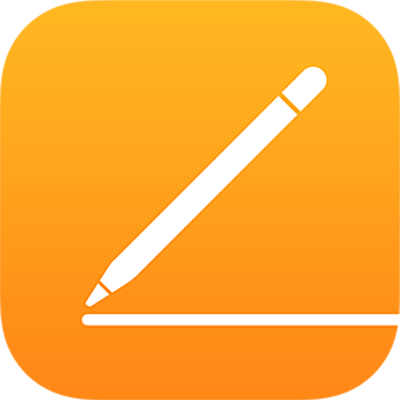
Format a document for another language in Pages on iPad
A document’s language and region determine the formatting conventions of the text—for example, whether commas or periods are used as decimal points, which currency symbol is used, where to hyphenate words at line breaks, and how dates are presented (day/month/year or month/day/year).
You can create a document that uses the formatting of a different language as long as you have more than one language in your device’s preferred language list. To use another language in your document, you need to add an input source for that language (for example, a second keyboard) in Settings ![]() .
.
Set up a keyboard or other input source for another language
To use another language in your document, first set up an input source (for example, a language-specific keyboard or character palette) for the language. When you add a language-specific keyboard to your device, that language is also added to your device’s preferred language list.
On the Home screen, tap Settings, then tap General.
Tap Keyboard > Keyboards > Add New Keyboard, then tap the keyboard you want to use.
To learn about using different languages and keyboards, see the user guide for your device.
If Pages is open, quit Pages and reopen it so that it recognizes the source.
To switch to the other input source, press and hold
 at the bottom of the keyboard, then choose the one you want.
at the bottom of the keyboard, then choose the one you want.
If you switch to a language written in a direction different from the current language, the insertion point moves to the side of the document used by the new language. For example, if you switch the input source from English to Hebrew, the insertion point moves to the right side of the document.
Create a document with the formatting of a different language
When you create a new document, you can automatically format numbers, dates, times, and currency in tables and charts using the formatting conventions of a specific language and region. You might want to do this if you plan to share the document with someone in another region.
For example, some regions use commas instead of periods to indicate decimal points, or different monetary symbols for currency, or they display numbers from right to left instead of left to right.
This language setting affects only the current document.
With the document manager in browse view, tap
 at the top of the screen.
at the top of the screen.Tap
 in the top-right corner of the template chooser, then choose another language (you may need to tap the current language to see other languages).
in the top-right corner of the template chooser, then choose another language (you may need to tap the current language to see other languages).Tap outside the settings to close them, then tap the template you want to use.
When you choose a new language, the template titles and text and some of the formatting controls change to reflect that language.
When you view a document that uses a language and formatting different from your device’s, a message near the bottom of the document indicates which formatting is used. To see examples of the formatting differences, tap the language in the message.

Change a document’s language and formatting
After you create a document, you can change its language setting while the document is open.
Note: You can’t change this setting for a shared document.
Tap
 , then tap Language & Region.
, then tap Language & Region.You may need to swipe up in the controls to see Language & Region.
Tap Language and choose a new language.
If you choose the first item in the Language pop-up menu (System - [language]), you reset the document to the language and region of your device. If you subsequently change your device’s language setting, or if you open the document on a device with a different language setting, the document’s language and region automatically change to match the device’s. But if you share the document, all users see the document in the language and region of your device.
Tap Region (if it’s active) and choose a region.
Tap Done.
After you change the document’s language and region, any new table and chart data you enter reflects the new language. For existing table and chart data, the language in dates (for example, month names) changes, but the punctuation in dates and the order of the day, month, and year don’t change. The punctuation in numbers (for example, the decimal point and thousands separator) does change.